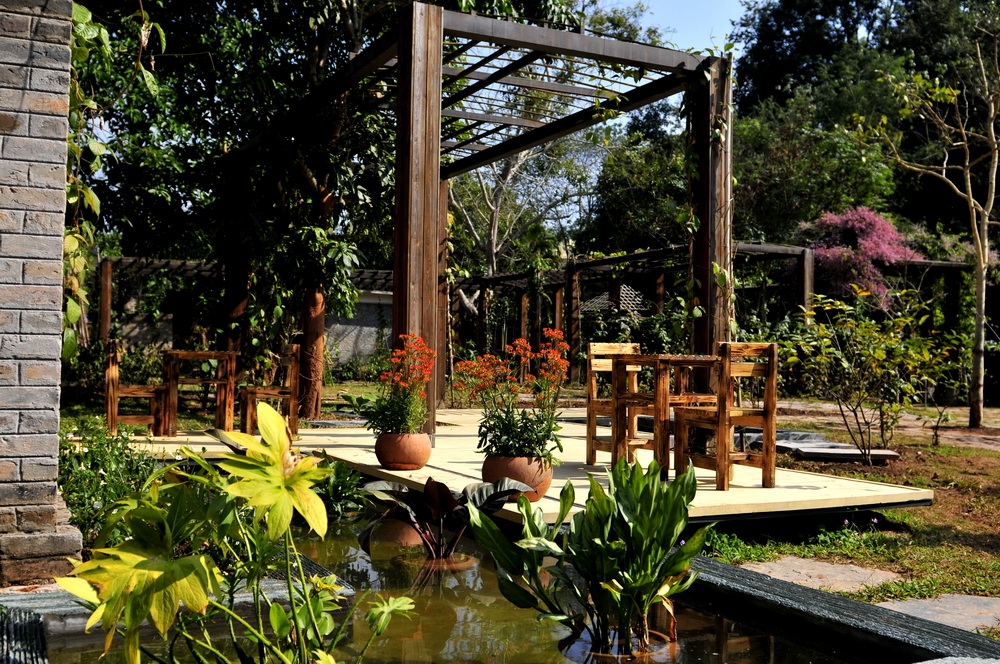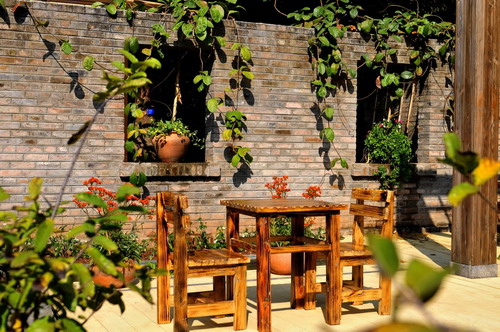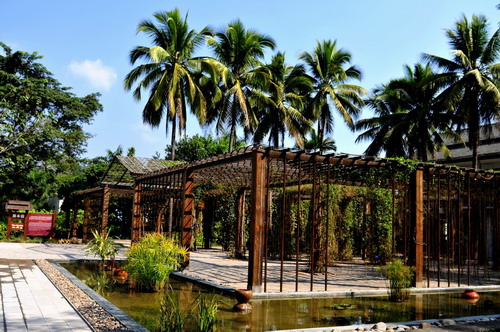Climbing plants - vines - are one of the most interesting, but also a very neglected group of plants. In spite of their varied interest and importance to man, vines have attracted relatively little scientific attention.
The Vine Garden was built with the aims to 1)collect and conserve tropical climbing plant resources, 2) provide a platform for scientific research on biology, behavior, and evolution mechanisms of climbing plants, 3) display horticultural beauty of vines.
The Vine Garden was built on a previous residential complex of XTBG. According to the Master Plan, the western area of XTBG is centered on public science education and living collections display, featuring with the creativity and specialty of gardening art, tourism and cultural connotation. No residential area is available in the western part. To implement the Master Plan and keep the historical signs, a few buildings and walls are kept to support climbing plants.
Dr Tang Hong from Qingdao Tengyun Landscape Architecture Company was invited as chief designer for the Vine garden. From landscape architecture perspective, a theme termed as: “From city to countryside, climbing plants occurred everywhere” was developed. The construction of the Vine Garden well followed the theme.
The Vine Garden covers an area of 15 ha with more than 500 vine species. According to vine plant's climbing adaptations and display functions, the garden is divided into 4 display sections, including ornamental vines, nature ecology vines, population vine, and hanging vine. Most of the climbing plants in the collection belong to family Leguminosae, Asclepiadaceae, Vitaceae, Cucurbitaceae, Bombretaceae, Bignoniaceae, Oleaceae, Passifloraceae, Aristolochiaceae, Ranunculaceae, Convolvulaceae, Ubiaceae, Apocynaceae, etc.
Following are scenary of the Vine Garden








